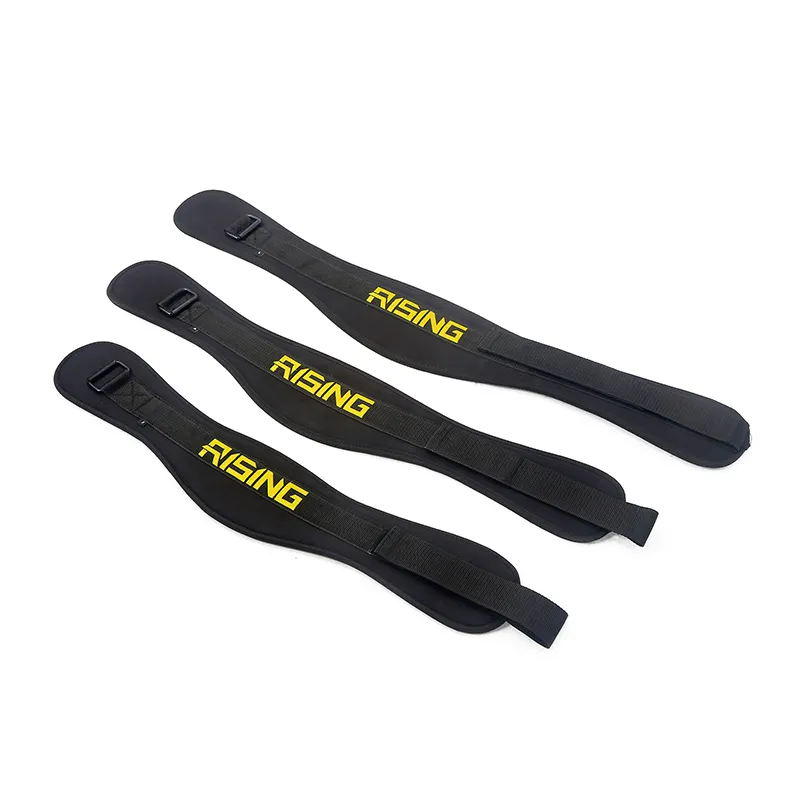Overview of US-China Tariffs on Fitness Equipment
Recent Changes in Trade Policy
US-China Fitness Equipment Tariffs: Notable Changes Over the Years In February 2023, the US applied an additional 10% tariff on all imports from China. That was on top of existing tariffs, bringing the average to about 19.3% for goods from China. The reasons for these tariffs are numerous, some based on politics and some on economic considerations to protect & reduce trade imbalance with domestic industries. The administration of President Joe Biden has kept in place the stance from his predecessor Donald Trump, but also providing additional measures such as tariffs linked to certain categories such as electric cars, indicating a double political and economic position on foreign trade. Among others, the Peterson Institute for International Economics says these tariffs bite hard on US imports, especially in industries in which China is a primary provider.
Key Categories of Fitness Equipment Affected
Many types of fitness equipment are subject to these tariffs, including treadmills, weights and bicycles. These are vital for the sporting goods market as China represents about 61% of imported equipment. The import quantity of these categories has fluctuated in recent years as the effects of these trade changes take effect. For example, the U.S. imported Chinese physical fitness equipment valued at $6.27 billion in 23. The actual impact on consumer’s propensity to purchasewould be increased as the tariffs would compound the cost inflation in these categories. These price fluctuations have important implications to both the industry and to people’s behavior, since high costs can dissuade purchases while at the same time driving consumers to seek out cheaper options). Families that are financially struggling will make it more of an impact and will definitely impact how they engage in fitness activities.
Economic Impact on the Fitness Equipment Industry
Increased Production and Import Costs
The fitness equipment industry has been heavily influenced by tariffs with increased costs of production, in particular, on raw materials and parts. For example, metal imports, including the steel used in workout equipment like treadmills and weights, now cost more because of tariffs. Reports from the industry suggest that pricing history demonstrates sharp spike in production costs after the imposition of the tariffs. According to industry experts, these additional costs are being passed on to customers in the form of higher retail prices or are being shouldered by manufacturers, meaning they would see smaller profit margins. This change is accentuated by a recent report in the Financial Times, which reveals an alarming increase in the cost of production due to general economic changes taking place.
Supply Chain Disruptions and Market Shifts
Ongoing Trade War Impact For many manufacturers and distributors of fitness equipment, the implications of tariffs are being felt as significant supply chain disruptions — as delays and shipping supply issues are currently presenting obstacles getting fitness equipment delivered and available in a timely manner. As businesses that want to run a good business despite all this are confronted with these challenges, there is a trend to instead ‘Buy local’, and reduce dependence on such international sources whose tariffs are made subject to changes. Examples from online businesses demonstrate the role that digital channels are playing in addressing these disruptions. Companies can also keep relationships with customers alive despite restrictions by focusing on sales online. Illustratively, data from industry reports reveal that e-commerce has proved indispensable in maintaining sales volumes during periods of supply chain disruption, thereby ensuring continuity for brands and customers.
Consumer Price Surges and Accessibility Issues
Rising Costs for Households and Gyms
Trade issues between the United States and China have caused a substantial hike the cost of fitness equipment, it’s been reported - and it’s not just families feeling the squeeze but businesses as well. Recent studies have shown that consumer prices for equipment have risen, in some cases as much as 46 percent, since the tariffs were imposed in 2017. As a result, gym owners report widespread concern, as many of them cannot shoulder these inflated costs without passing them onto members. This has begun to change the way people buy, making it harder for them to justify the price of a gym in the home, which could lead to reduced overall fitness at home across the nation.
Disproportionate Impact on Low-Income Families
Low-income families are hardest hit by the increases in equipment costs. The data confirms that these families are suffering most with inactivity for households earning under $25,000 a year alarmingly high. Access to gym facilities can also prove to be a challenge when affordable options such as community gyms are effected by the same financial pressures limiting their range and access. This is escalating a health disparity, as low-income families increasingly can’t afford to have their kids play sports at all – which puts community health at risk over the long run.
Shift to Alternative Suppliers and Local Manufacturing
As a reaction to the changing tariffs & import policies, fitness equipment companies are moving to different vendors and starting to focus on local production to avoid negative impacts. The strategic shift is aimed at cutting dependence on cost-heavy imports and stabilising input prices. For instance, Freedom Fitness Equipment, a well-known company that produce Fitness equipment, has started discussing with domestic manufacturers for strengthening supply chain resilience. Local production has its issues, with setup costs and longer lead times, but the long-term cost savings and less exposure to tariffs makes it a good option for many companies.
While the economic benefits are clear, so too are the logistical hurdles for multiple businesses making the shift to local production. Businesses such as Hammer Clad have found ways of moving their product lines, rubber flooring and exercise bars, to U.S.-based facilities. These are the actions that portend a possible revival of domestic manufacturing in the sector. That's out of economic survival and long-term planning. The movement to local production is also buoyed by numbers that suggest a potential resurgence of domestic manufacturing, with all of its job-creating potential and less reliance on the vagaries of international supply lines.
Growth of Secondhand Equipment Markets
The rise of secondhand fitness equipment markets in this regard, secondhand offerings proving to be a cost-effective alternative for both consumers and businesses confronted with rising prices from tariffs. The trend towards purchasing used machines for the fitness club industry has grown significantly and provides a great way for fitness fans and facilities to keep their spaces updated and fresh without spending a lot of money. Specialised resale e-commerce platforms and online platforms are some of the dynamic channels of in the fitness equipment online market, reflecting a swollen share in several developed economies.
Market watchers say that the shift to second-hand gear isn’t just the result of a period of economic pressures, but a more permanent shift in consumer behavior. The secondhand market has been on an upward trajectory for years now, especially with the emergence of digital platforms that remove the friction from the process. That could spell a sea change for the fitness industry, where purchasing second-hand has become second nature to customers, making thrift more mainstream as companies have sourced their way through recession and recovery.
Long-Term Outlook and Market Predictions
Potential for Domestic Manufacturing Growth
One category with potential for the sustainable growth of domestic manufacturing in fitness equipment is emerging as companies learn to deal with shifting duty landscapes. Tariffs are going to be an incentive to move toward more domestic production because business owners want to avoid the cost of importing materials, experts say. It’s also a numbers game: all else being equal, an increase in domestic output translates to a favourable economic impact – for instance, higher GDP and local employment rates. Returning fitness equipment production back to local can also help to create jobs in the fitness equipment industry as well as the associated businesses, offering employment opportunities and economic growth.
Policy Revisions and Global Trade Dynamics
The effects of evolving tariff structures and trade relationships on the fitness industry is subject to wholesale policy change in the years to come. The reshaping of the sector may go further if some analysts are right and changes on global markets, thanks to changes in political climate and economic policy, alter the landscape just as credit reduction finishes. For example, reduced tariffs might rekindle international trade and thereby lower the cost of manufacturing. Firms may choose adaptive modes, such as shifting the focus of a market entry, or investing in technology to reduce the risk of uncertain policy changes. Amid persistent uncertainty in global trade dynamics, agility and an emphasis on education will be hallmarks for a thriving business in the fitness equipment industry.
FAQ
What are the recent changes in US-China tariffs on fitness equipment?
The US imposed an additional 10% tariff in February 2023, making the total average tariff rate around 19.3% on Chinese imports.
What categories of fitness equipment are most affected by tariffs?
Key categories include treadmills, weights, and bicycles, with China supplying approximately 61% of such imported equipment.
How do tariffs impact consumer behavior towards fitness equipment?
Increased tariffs lead to higher prices, affecting consumer purchasing decisions, especially among low-income families.
Are tariffs causing shifts in the fitness equipment supply chain?
Yes, there is a move towards local suppliers and manufacturing to mitigate relying on tariff-imposed imports.
Is the secondhand fitness equipment market influenced by tariff changes?
Yes, tariffs have contributed to the growth of secondhand markets as consumers seek more affordable alternatives.


